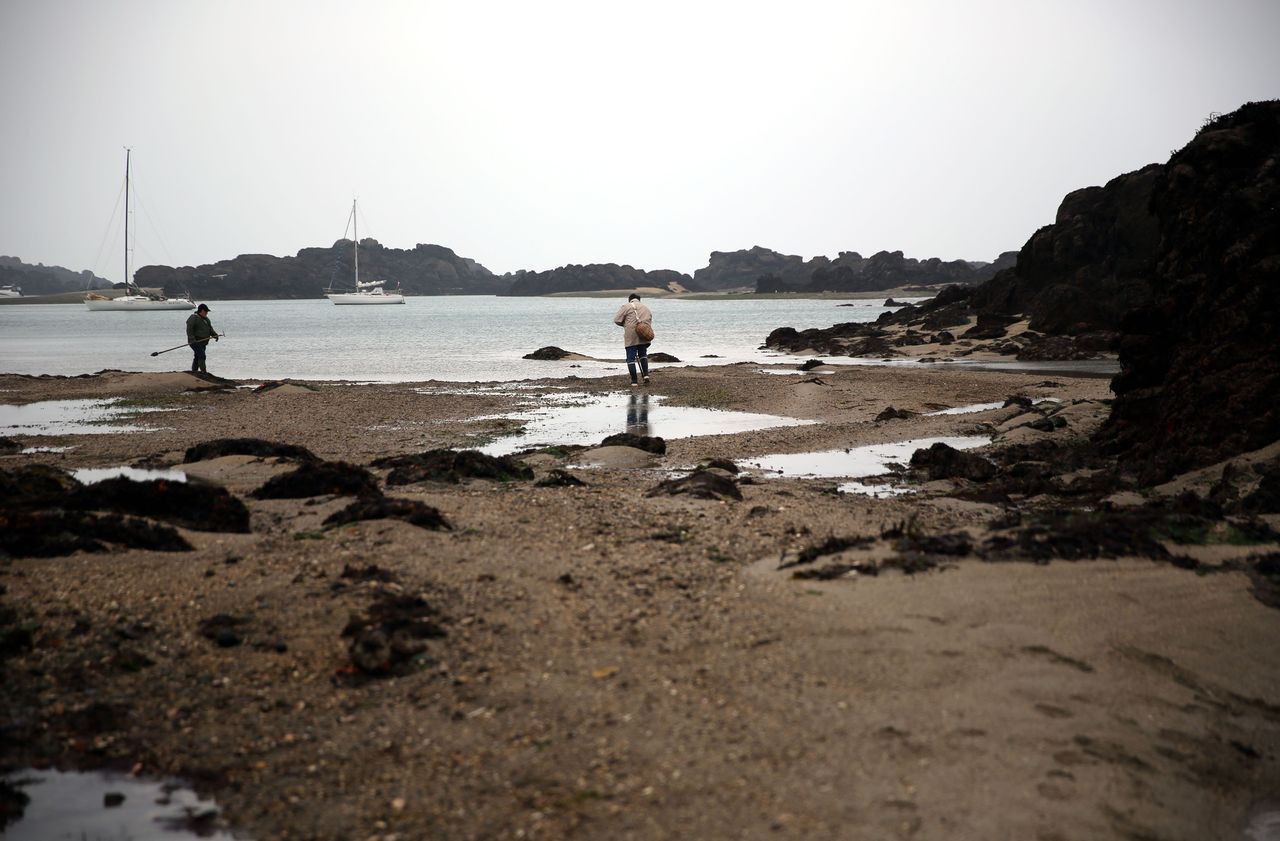Boots, a landing net, a sturdy kitchen knife, a sunburn hat… Are you there? The foreshore, this coastal strip where the tide comes and goes, stretches out its arms to you. This in-between, which is neither quite the beach, nor quite the sea, the inhabitants of the Atlantic coast know well. Each time the sea recedes into the distance, hundreds of pairs of buttocks appear, leaning figures, their hands foraging ...
For its 2 to 3 million followers, this area which spreads out and shrinks according to the swaying of the sea waters, it is paradise, the promise of a dinner decorated with clams, cockles, whelks, abalone, sea caviar. Lysiane Gendry was there, until one day this passionate about marine flora and fauna, instead of collecting shells, decided to "take an interest in the individual that was inside".
This is how the founder of the Graine d'océan association, in Ploemeur (Morbihan) near Lorient, developed a passion for the foreshore, the multiple floors of which she introduced to holidaymakers. Because like all the other estrans, his located between Guidel and Larmor, it's a whole world: "Upstairs, on the upper floor, where there is hardly any water, it is there. 'level of lichens just licked by the spray, she explains in the middle in the tidal zone, it is that of the belts of spiral, vesiculated or serrated wrack, these algae that we commonly call seaweed, then just at the edge of the water, it is the world of thousands of small animals like the superb starry botrylles. "
This lower zone which explodes with colors, it is her favorite: "under each raised stone, there can be about thirty different species, fixed or not", she explains. It is also a very fragile environment: "When we expose, for example, the starry botrylles, they dry up and die, the little porcelain crab also suffers a lot in the sun". In these worlds, each individual has his appointed place which he leaves at high tide to feed himself. At low tide, it returns and does not move any more, even if it means folding back into its shell or secreting mucus.
"And if one of the elements of the foreshore comes to be disturbed, its entire food chain is disturbed", underlines Lysiane Gendry. Without the algae they graze, the limpets (or Chinese hats) so firmly attached to the rocks, would be hungry. Without salt water pools, the monodont, a gastropod mollusc often confused with the periwinkle, would not have its breakfast… This environment, which is both fragile and rich, is now increasingly protected. But it was not always so.
And when Colbert, Louis XIV's Minister of Finance invented the notion of the maritime public domain by wanting to include tidal flats, which storms this raised. The sea, including in Brittany, has long been seen as a space serving the land. The coastal populations, according to the seasons of their need, drew from it fish, shellfish, salt, but also seaweed, the famous "manure of the seas", as the historian Gérard Le Bouëdec, author of a beautiful article entitled "For a social history of the French foreshore" published in 2010 in the Annales de Bretagne et des pays de l'Ouest.
Useful even in the vineyards
Precious foreshore: how many quarrels between communes, this pantry has unleashed. How many legal wars he fed between central and local authorities who wanted to keep their riches for themselves! We forget it, but it is thanks to the seaweed collected on the shore that many fortunes have been made, including in… wine. On the Atlantic coast, we quickly understood the interest of placing algae at the foot of vines as fertilizer, the practice also gained the Mediterranean. Thus, towards the end of the 18th century, "in Saint-Tropez, seafarers control 40% of the vineyards and the captains and bosses have taken over a quarter of the land while they represent only 7% of the total population" explains Gérard Le Bouëdec.
Newsletter - Most of the news
Every morning, the news seen by Le ParisienI'm registering
Your email address is collected by Le Parisien to enable you to receive our news and commercial offers. Learn more
Same scenario in Sète where we start planting almost all the estates neighboring the sea with vines. This appetite of men for the foreshore, others had to get involved to stop it; this was done in 1973, with the Kreitmann judgment of the Council of State, at the turn of a real estate dispute, which clarified the definition, undoubtedly a little too poetic, made by Colbert in his ordinance of July 1681. Today , not only is the foreshore is public maritime domain (DPM), it cannot be sold, and its soil and its subsoil benefit from the same protection. Lysiane botrylles can sleep peacefully as long as you don't push them too hard.
"All that the sea covers and discovers"
It is therefore the royal ordinance of Colbert, Prime Minister of Louis XIV, which gives a first definition of the foreshore, namely "will be deemed to be the shore and shore of the sea, all that the sea covers and discovers during the news. and full moons, and how far the great wave of March can extend over the shores ”.
He made it a public domain and prohibited "to build on the shores, to put any stakes there". The idea is not to leave the periwinkles alone there, on the contrary. Nothing should be "prejudicial to navigation". We are far from the spirit of the coastal law which wants to protect the French coasts.
The history of natural phenomena in 6 episodes
1. The shooting stars
2. The tides
3. The foreshore
4. The Milky Way
5. The lightning
6. The sunsets














